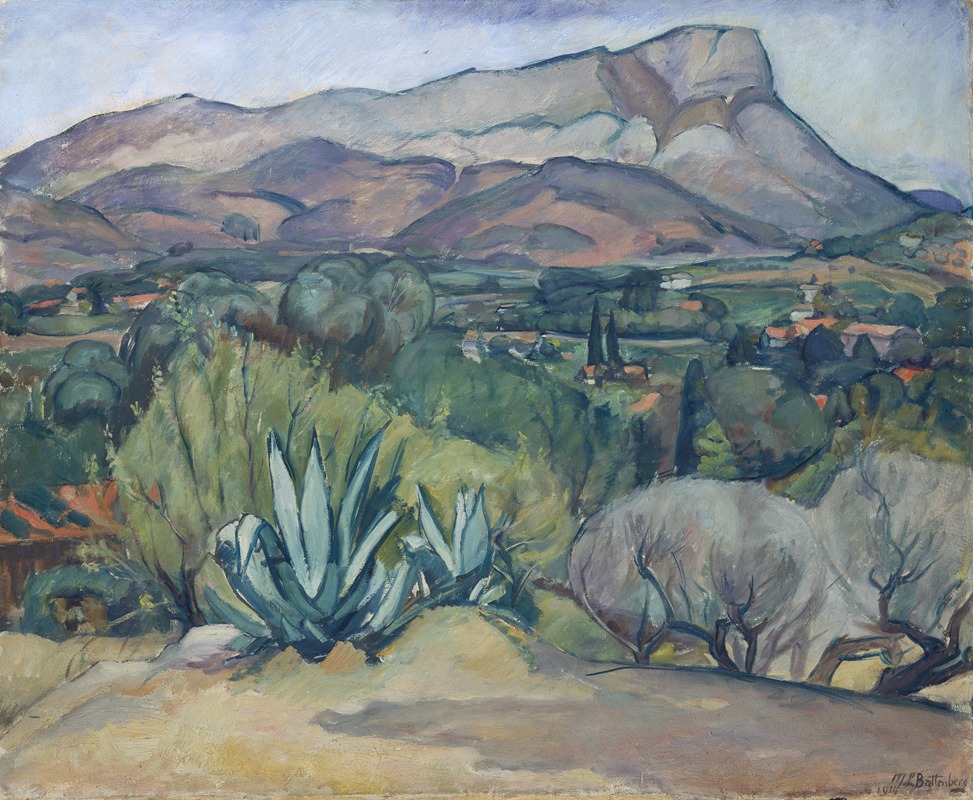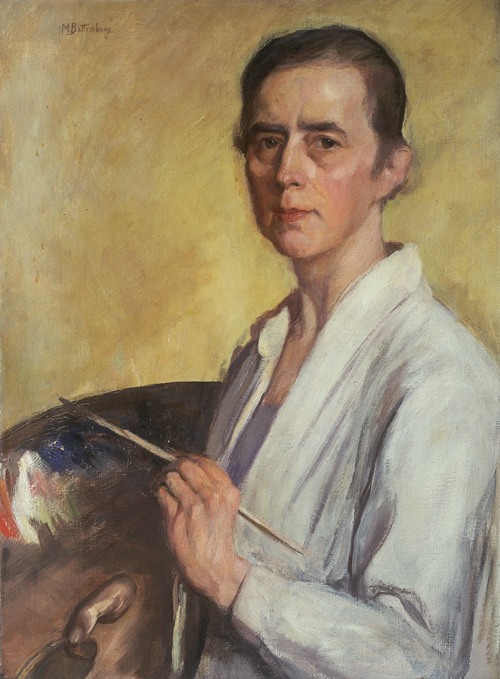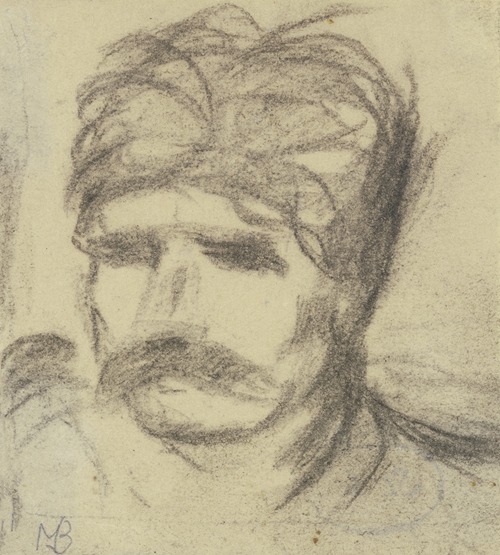

Mathilde Battenberg was a German painter.
Caroline Luise Mathilde Elisabeth Battenberg was the eldest daughter of the teacher Friedrich Wilhelm Battenberg and his wife Mathilde. In 1884, Friedrich Battenberg became a pastor at the Peterskirche in Frankfurt, so the family moved to Frankfurt and, from 1893, lived at Jahnstraße 20. Mathilde Battenberg spent her school years, partly living with relatives, in Strasbourg at the Institut Bon Pasteur. She realized her childhood dream of attending the Städel School from 1895 to 1899, where she was one of the first female students of painting to be accepted by Ottilie W. Roederstein. Battenberg was also impressed by Roederstein's unusual emancipation for the time, living with a female partner. After her studies, Battenberg lived in Frankfurt with her partner Elisabeth H. Winterhalter, and from 1912, after the death of her parents, with her younger brother Hans.
Her brother Ugi Battenberg followed her example in 1898. Mathilde Battenberg, introduced by Roederstein, became acquainted with the art world in Paris (Louvre) and Barbizon and, from 1899, studied at the Parisian private school Académie Colarossi, which admitted female students. The painting style he learned there from Charles Cottet, Lucien Simon and the Norwegian Frits Thaulow was characterized – in contrast to the prevailing Impressionist spirit – by embedding dark shades of paint, which is visible in Battenberg's portraits and their dark color scheme. Throughout her life, Battenberg was open to free-religious impulses, an inclination that was partly caused and encouraged by her mother, despite the customs of a Protestant parsonage. Battenberg undertook study trips to France, Holland, Florence and Berlin.
From 1906, she had her own studio on Hochstraße in Frankfurt, and two years later one in the Städel. She exhibited mainly portraits and still lifes in Frankfurt, Munich and Metz, together with other representatives of Late Impressionism.
After the death of her parents, Battenberg initially moved to Hofheim am Taunus in 1912, and then back to Frankfurt-Sachsenhausen the following year. In 1914, she undertook an extended trip to France (picture: Provence Landscape), which she had to cut short in August due to Germany's declaration of war. She met Max Beckmann in the apartment of her brother-in-law Ugi and sister-in-law, and they exhibited together in Frankfurt. Compared to earlier portraits, Battenberg's use of intense color and contoured brushstrokes is surprising (Portrait of an African).
In the 1920s, Battenberg was a sought-after and esteemed portraitist in Frankfurt and also had a clientele in Switzerland. After 1929, she created further works, particularly portraits of girls (Portrait of Maria Giese, 1929), in the new Städel studio that she had taken over from Wilhelm Steinhausen and his daughter Marie Paquet-Steinhausen.
Mathilde Battenberg was buried in the main cemetery of Frankfurt (Gewann J 954).




